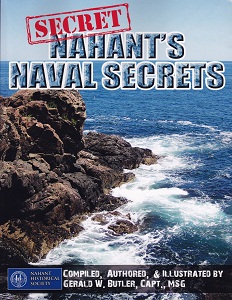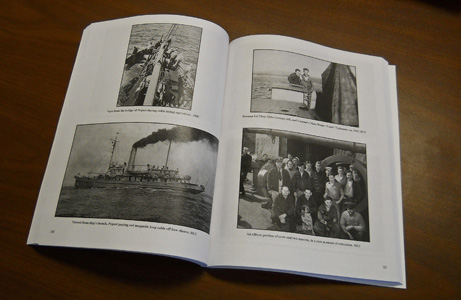Nahant Indicator Loop Station
by Gerald W. Butler
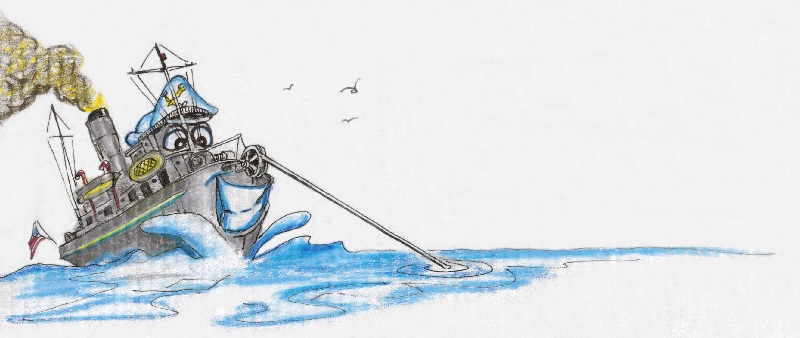 |
|
Caricature of USGC Pequot by Jerry Butler 2011 |
The August 2012 Coast Defense Journal published by the Coast Defense Study Group features a detailed article by author and historian Gerald W. Butler on the indicator loop defenses installed by the Pequot at Nahant, Massachusetts in 1942 as part of the comprehensive installations put in place to protect Boston Harbor. Click here to download a copy.
"Naval Unit 1D - East Point, Nahant, Massachusetts, in World War II, 1942-1945" provides an excellent case study on one of the indicator loop defense systems laid down by the Pequot and details the history of this top secret underwater detection installation from the initial planning stages through the end of the war when the indicator loop station was closed in May of 1945.
A long time associate and supporter of our Pequot website project and Dr. Richard Walding's international research project on indicator loop technology, Jerry's examination of the Nahant indicator loop defense system gives us great insight into the specific work the Pequot and its crew played to put that important harbor defense system in place. Jerry's superb illustrations show how the three legs of indicator loop cable were configured along the coastline and how the shore stations that supported them were put into operation. Jerry has provided us cable samples and numerous photos which show the abandoned indicator loop Operations Building and Administration Building which still exist today along the rugged coastline of the Nahant Peninsula.
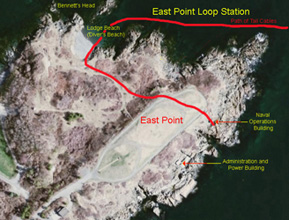 |
 |
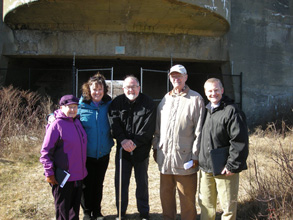 |
|
For more information and additional photographs about the history of this indicator loop receiving station visit Dr. Richard Walding's East Point Nahant Indicator Loop Station web page. |
||
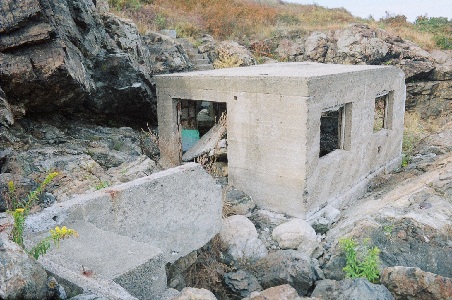 |
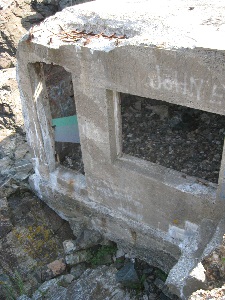 |
|
Ruins of the Nahant indicator loop shore stations 2012 |
|
 |
|
Captain Jerry Butler along the Atlantic Coast 2011 |
Gerald W. Butler, a captain in the Massachusetts State
Guard, was the former curator of Fort Warren and Fort Independence, Boston
Harbor, and Fort Rodman, New Bedford. He has published numerous books and
periodicals on seacoast fortifications. He lectures and serves as a consultant
to military museums and state parks, and was the former historian for U.S. Navy
mine units. His detailed illustrations of seacoast fortifications are published
worldwide. In November of 2012 he published Nahant's Naval Secrets which details
the history of military maritime activities and harbor defense efforts around
Boston Harbor on the Nahant Peninsula from World War I though the end of World
War II. This book has an extensive section on the installation of indictor loops
laid down by the Pequot and tells how planning for those undersea defenses began
in 1941 well before Pearl Harbor, their use during WWII, and what remains today
of the shore stations which supported this top secret operation during the
Battle of the Atlantic. The Pequot website and veterans contributed to Jerry's
research.
Jerry Butler has published numerous books and periodicals on seacoast fortifications. He lectures and serves as a consultant to military museums and state parks, and was the former historian for U.S. Navy mine units. His detailed illustrations of seacoast fortifications are published worldwide. His publications include:
Jerry has resided in Nahant, Massachusetts since 1949.Military Annals of Nahant, Massachusetts
Military History of Boston's Harbor Islands
Fort Warren - the Key to Boston Harbor
The Guns of Boston Harbor: from the Bay Colony to the Present
The Military History of the Cape Cod Canal
Indicator Loops - an overview (YouTube, 70 minutes)
Return to:
East Point Nahant Indicator Loop Station
